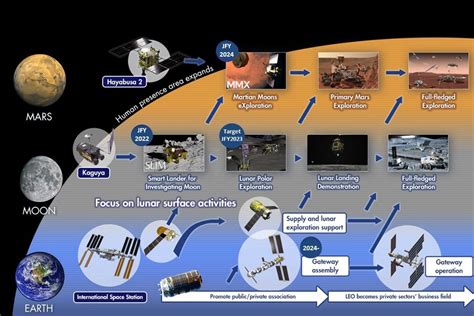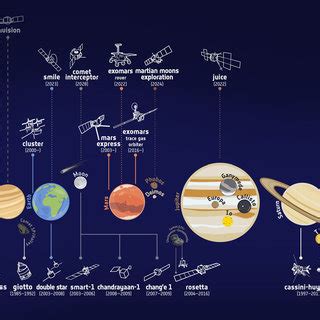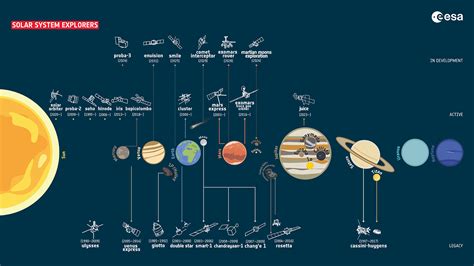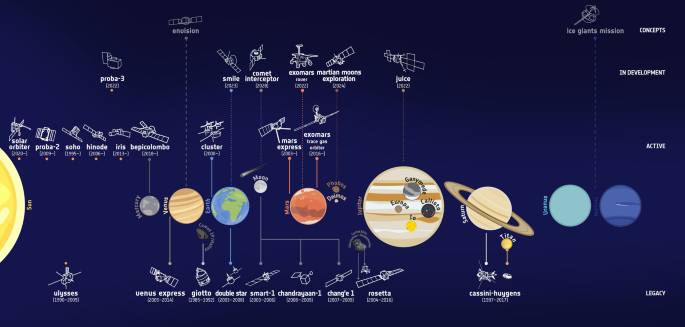The Kuiper Belt, a distant and mysterious region of our solar system, lies beyond the orbit of Neptune and holds the secrets of the early solar system. Comprised of icy bodies, dwarf planets, and countless smaller objects, this vast, disk-shaped area is a treasure trove for astronomers and planetary scientists. Since its discovery in the early 1990s, the Kuiper Belt has revolutionized our understanding of planetary formation and the dynamic processes that have shaped our cosmic neighborhood. This article delves into the location, composition, and historical discoveries of the Kuiper Belt, highlighting notable objects and exploring its scientific importance, as well as current and future missions dedicated to its study.
Let’s examine this topic closely with uzocn.com
1. Location and Composition: Overview of the Kuiper Belt’s position in the solar system and its primary components, including icy bodies and dwarf planets.
The Kuiper Belt, a vast, doughnut-shaped region, stretches from Neptune’s orbit at 30 astronomical units (AU) to approximately 55 AU from the Sun. Located at the solar system’s outermost edge, it is often called a distant frontier, populated by remnants of the solar system’s formation. This icy realm is primarily composed of small bodies, including comets, asteroids, and dwarf planets. Rich in frozen volatiles like water, ammonia, and methane, these objects hold the key to understanding the primordial materials that formed planets and other celestial bodies. Notably, the Kuiper Belt is home to dwarf planets such as Pluto, Haumea, and Makemake. These bodies, along with thousands of smaller objects, offer invaluable insights into the processes that shaped our solar system.

2. Discovery and History: Significant milestones in the discovery and exploration of the Kuiper Belt, highlighting key astronomers and missions.
The discovery of the Kuiper Belt was a significant milestone in the field of astronomy, reshaping our understanding of the solar system’s structure. Although the idea of a distant region beyond Neptune had been speculated for decades, it wasn’t until 1992 that astronomers David Jewitt and Jane Luu officially identified the first Kuiper Belt Object (KBO), named 1992 QB1. This discovery confirmed the existence of a vast population of small, icy bodies beyond Neptune, leading to further exploration.
The concept of the Kuiper Belt itself was proposed by astronomer Gerard Kuiper in 1951, though he never directly observed it. Subsequent discoveries, including Pluto’s reclassification as a dwarf planet in 2006, underscored the significance of this region. Key missions, such as NASA’s New Horizons, which flew by Pluto in 2015, have provided invaluable data on the composition and characteristics of KBOs. These milestones have deepened our understanding of the Kuiper Belt’s role in the solar system’s formation and evolution.

3. Notable Objects: Detailed descriptions of prominent objects within the Kuiper Belt, such as Pluto, Haumea, and Makemake.
The Kuiper Belt is home to a fascinating array of celestial bodies, with Pluto being the most famous among them. Once classified as the ninth planet, Pluto was redefined as a dwarf planet in 2006 due to its size and the discovery of similar objects within the Kuiper Belt. Pluto, with its complex system of five moons and a surface covered in nitrogen ice, is a key object of study for understanding planetary formation.
Haumea, another prominent dwarf planet in the Kuiper Belt, is unique for its elongated shape, caused by its rapid rotation. Discovered in 2004, Haumea also has a ring system and two moons, adding to its intrigue. Its surface is primarily composed of water ice, making it one of the brightest objects in the Kuiper Belt.
Discovered in 2005, Makemake is a noteworthy dwarf planet. Slightly smaller than Pluto, Makemake exhibits a reddish hue due to the presence of tholins on its surface. Characterized by extremely low temperatures, its surface is primarily composed of methane, ethane, and nitrogen ices. The absence of an atmosphere and its isolated orbit contribute significantly to our understanding of the diverse objects within the Kuiper Belt.
The remarkable objects in the Kuiper Belt demonstrate the region’s vast diversity and underscore its crucial importance in enhancing our knowledge of the outer solar system.

4. Scientific Importance: Explanation of why the Kuiper Belt is crucial for understanding the early solar system and planetary formation.
The Kuiper Belt is of immense scientific importance because it serves as a window into the early solar system. As a reservoir of primordial objects, the Kuiper Belt contains remnants from the time of planetary formation, offering a unique opportunity to study the building blocks that shaped the planets and other celestial bodies. Unlike planets that have undergone significant changes due to geological processes, the objects within the Kuiper Belt have remained relatively untouched for billions of years, preserving the original materials from the solar system’s formation.
The study of Kuiper Belt Objects (KBOs) helps scientists understand the processes of accretion and the dynamics of the early solar system. By analyzing the composition and distribution of these icy bodies, researchers can gain insights into how the outer planets, such as Neptune and Uranus, migrated to their current positions. Additionally, the Kuiper Belt’s role in influencing the orbits of comets and its potential to harbor other dwarf planets makes it a critical area of study for understanding the broader architecture of our solar system.
Overall, the Kuiper Belt is crucial for reconstructing the history of the solar system, providing clues about the conditions and processes that led to the formation of planets and other solar system structures.
5. Current and Future Missions: Information on current missions studying the Kuiper Belt and upcoming plans for further exploration.
Current and future missions focused on the Kuiper Belt are critical for expanding our knowledge of this distant region. One of the most notable missions is NASA’s New Horizons, which provided the first close-up images of Pluto during its 2015 flyby. New Horizons has since continued its journey deeper into the Kuiper Belt, successfully encountering the KBO Arrokoth (previously known as Ultima Thule) in 2019. The data collected by New Horizons has offered unprecedented insights into the composition, geology, and atmospheres of these distant objects, revealing the complex nature of the Kuiper Belt.
Looking ahead, future missions are being planned to further explore this intriguing region. One such proposal is the Kuiper Belt Extended Mission (KEM), which would allow New Horizons to continue studying additional KBOs as it travels outward. Another potential mission, currently in the conceptual phase, is the proposed Trident mission, which aims to explore Triton, Neptune’s largest moon, and potentially investigate the Kuiper Belt’s influence on the outer solar system.
These missions are vital for understanding the Kuiper Belt’s role in the solar system and will continue to provide valuable data for years to come. As technology advances, future explorations promise to uncover even more about the origins and evolution of this distant frontier, deepening our understanding of the solar system’s history.
The Kuiper Belt remains one of the most intriguing regions of our solar system, offering vital clues about its early history and formation. From its discovery and exploration to the detailed study of its notable objects like Pluto, Haumea, and Makemake, the Kuiper Belt continues to shape our understanding of planetary science. Current and future missions will undoubtedly expand our knowledge further, making the Kuiper Belt a key focus for astronomers and a gateway to unlocking the mysteries of the distant reaches of our solar system.
uzocn.com


